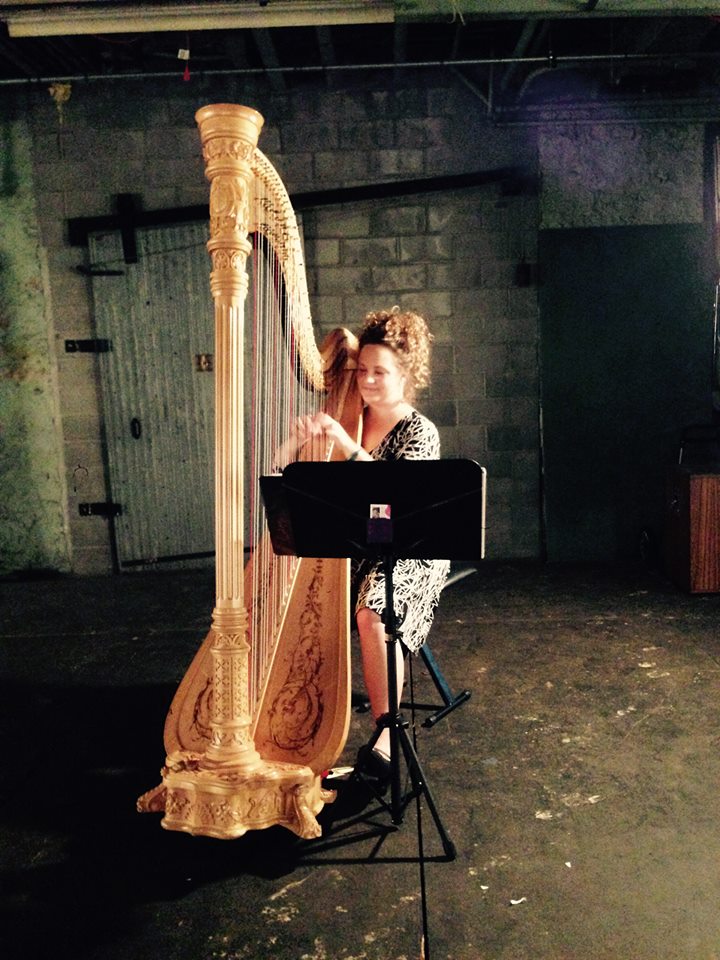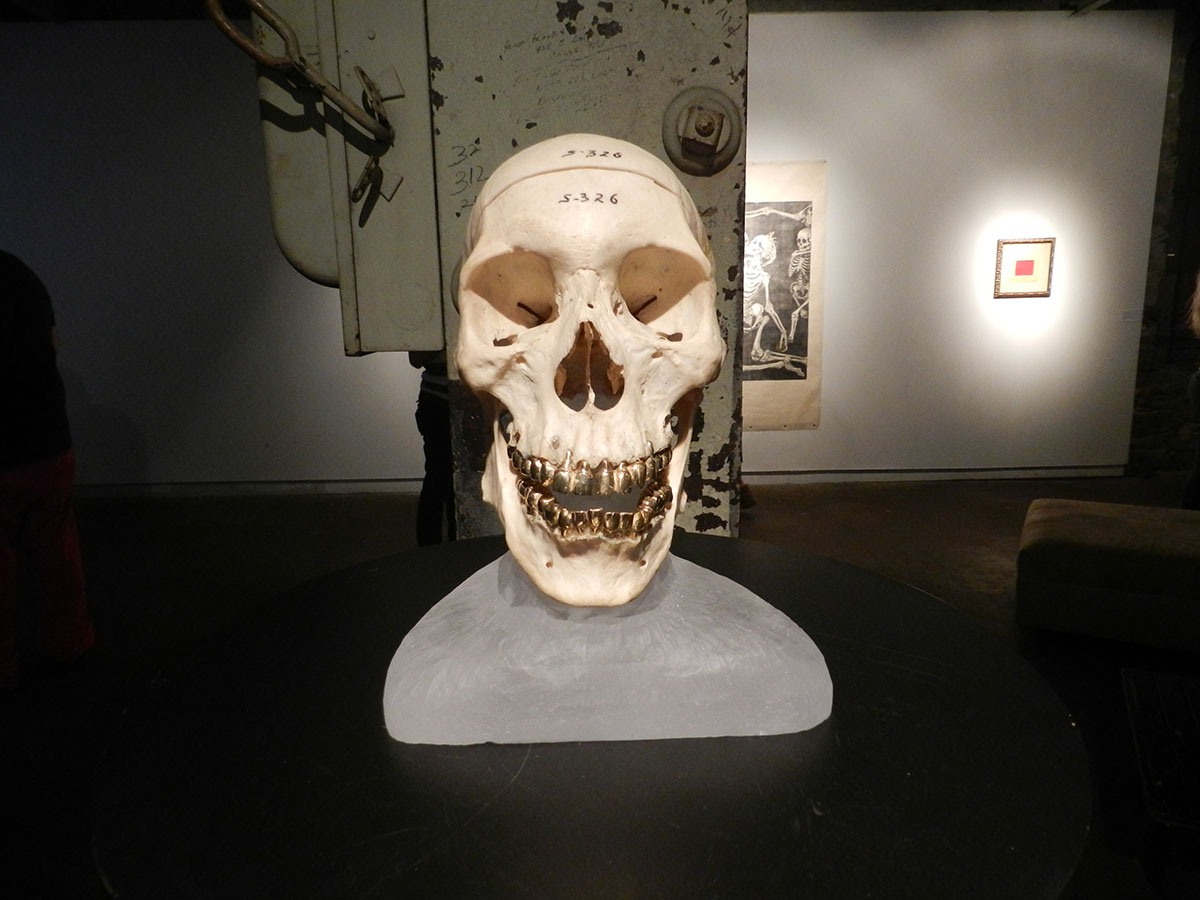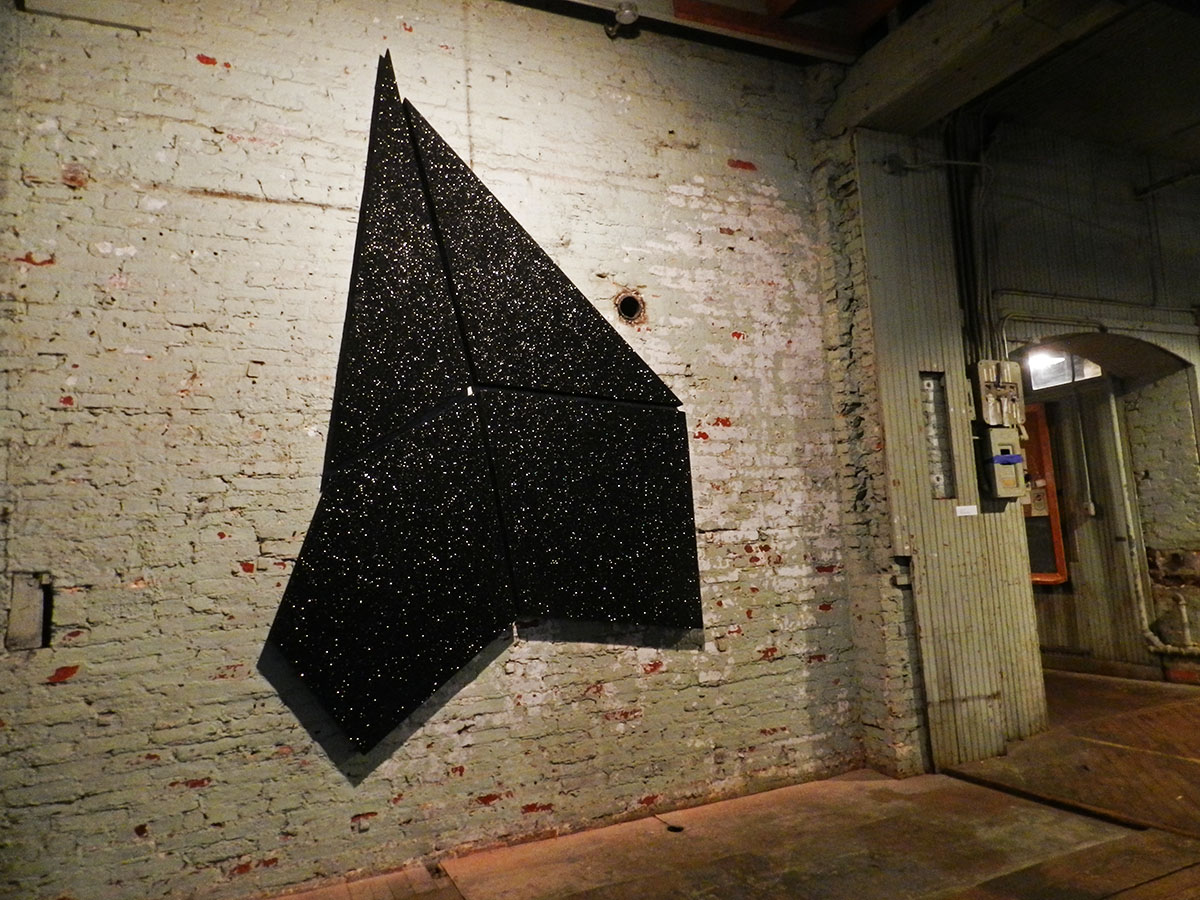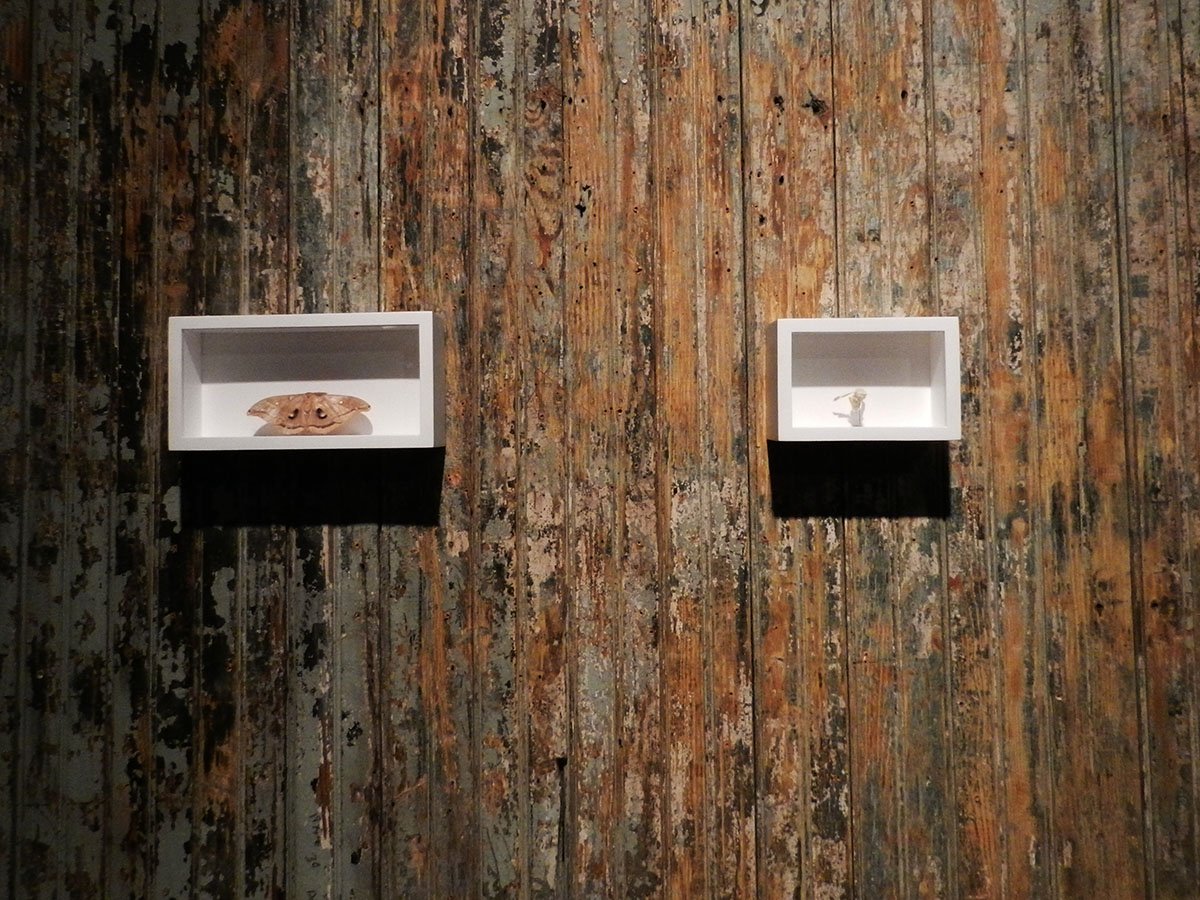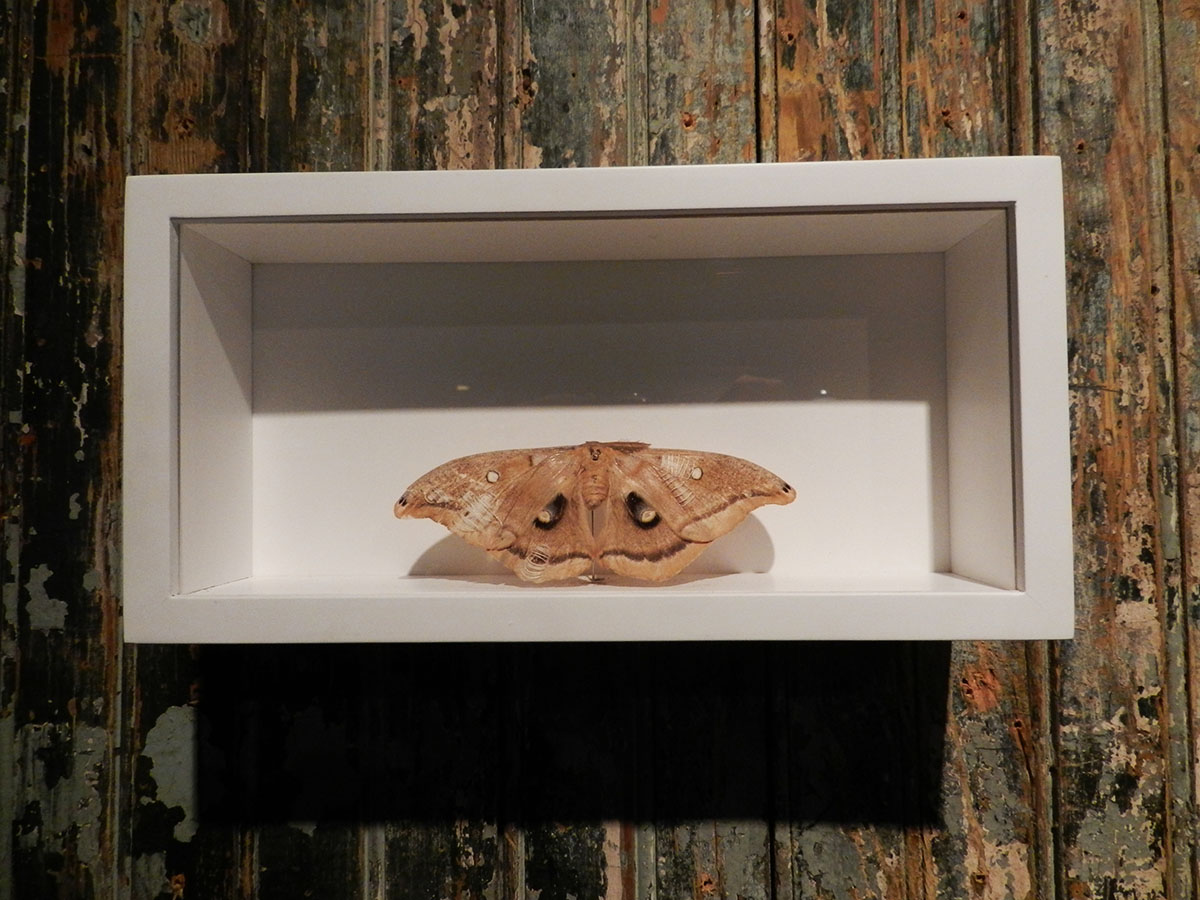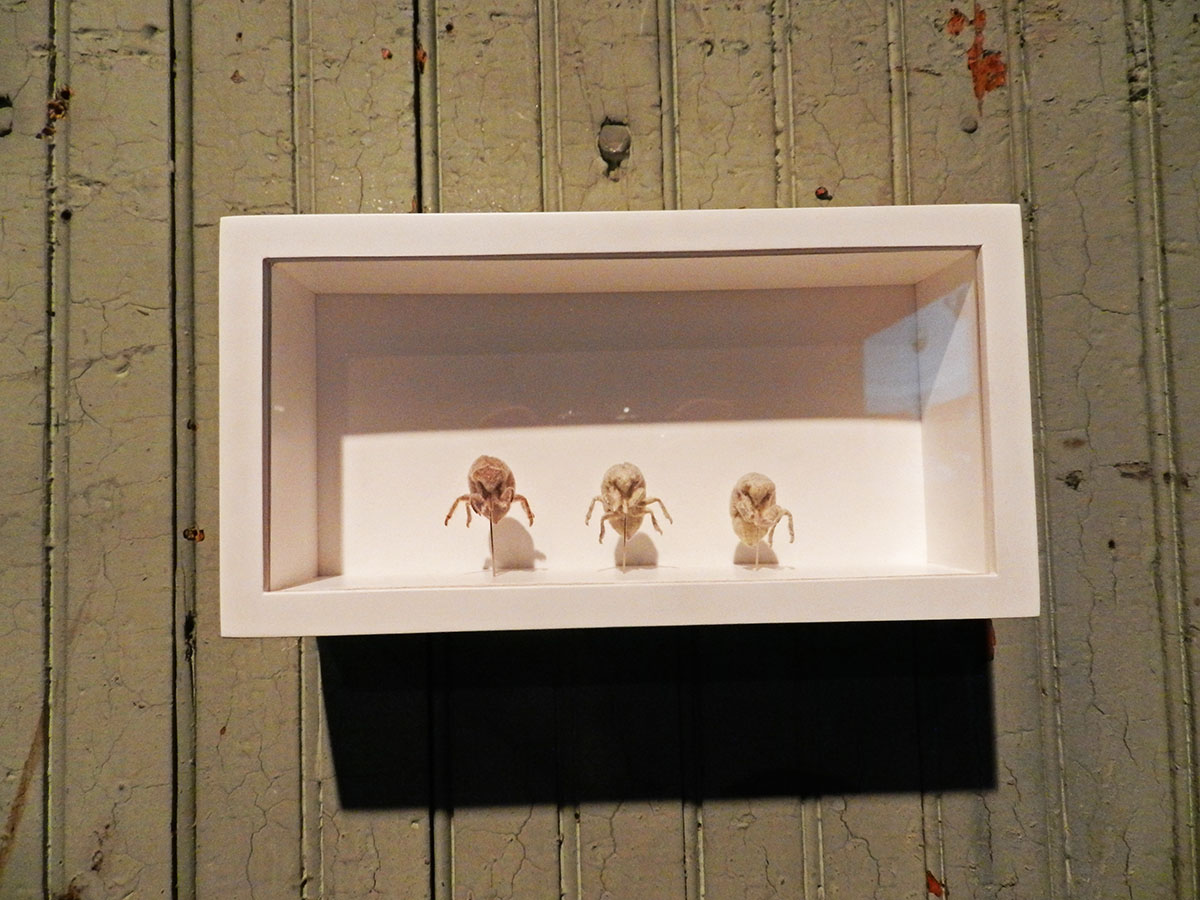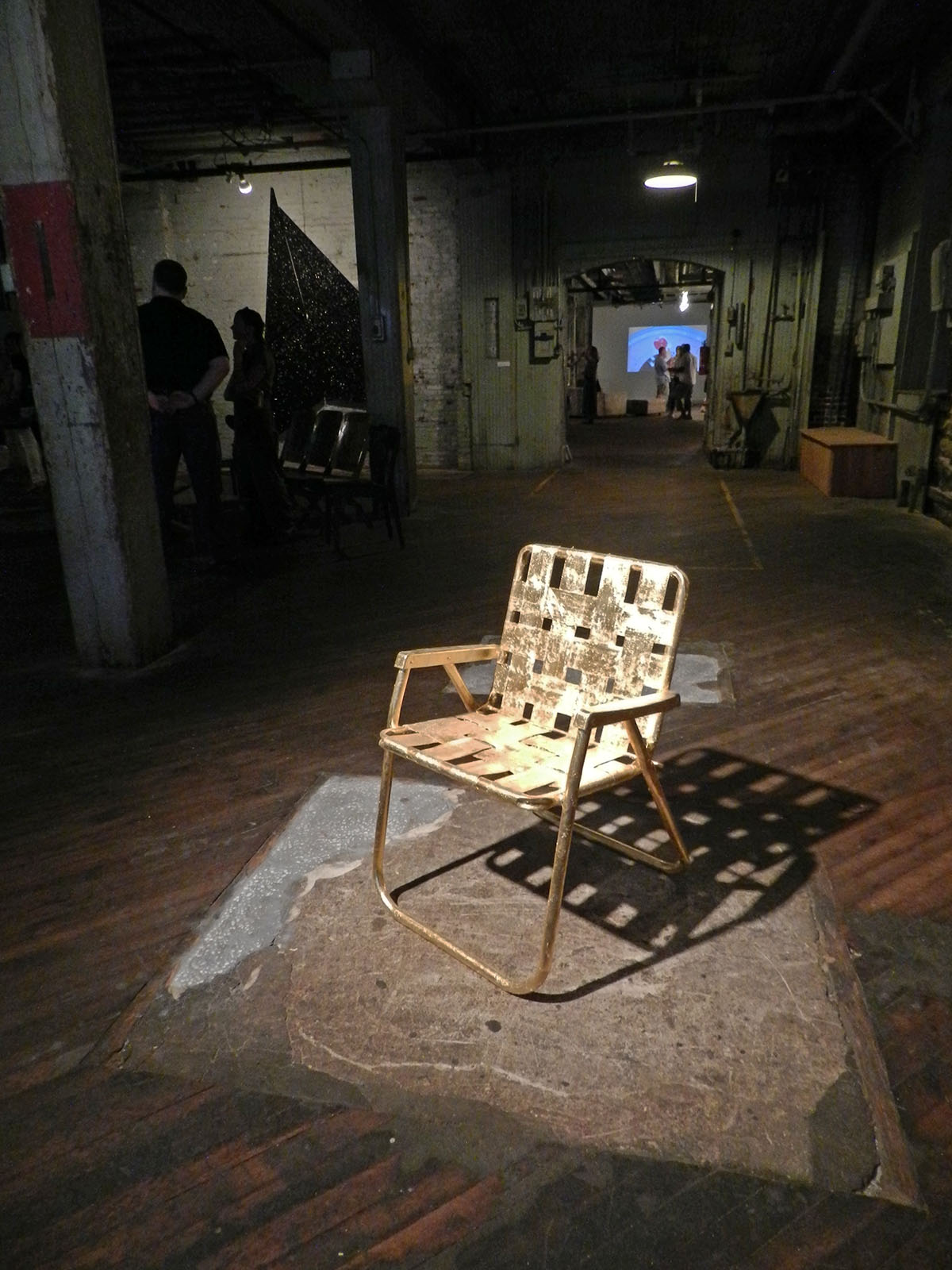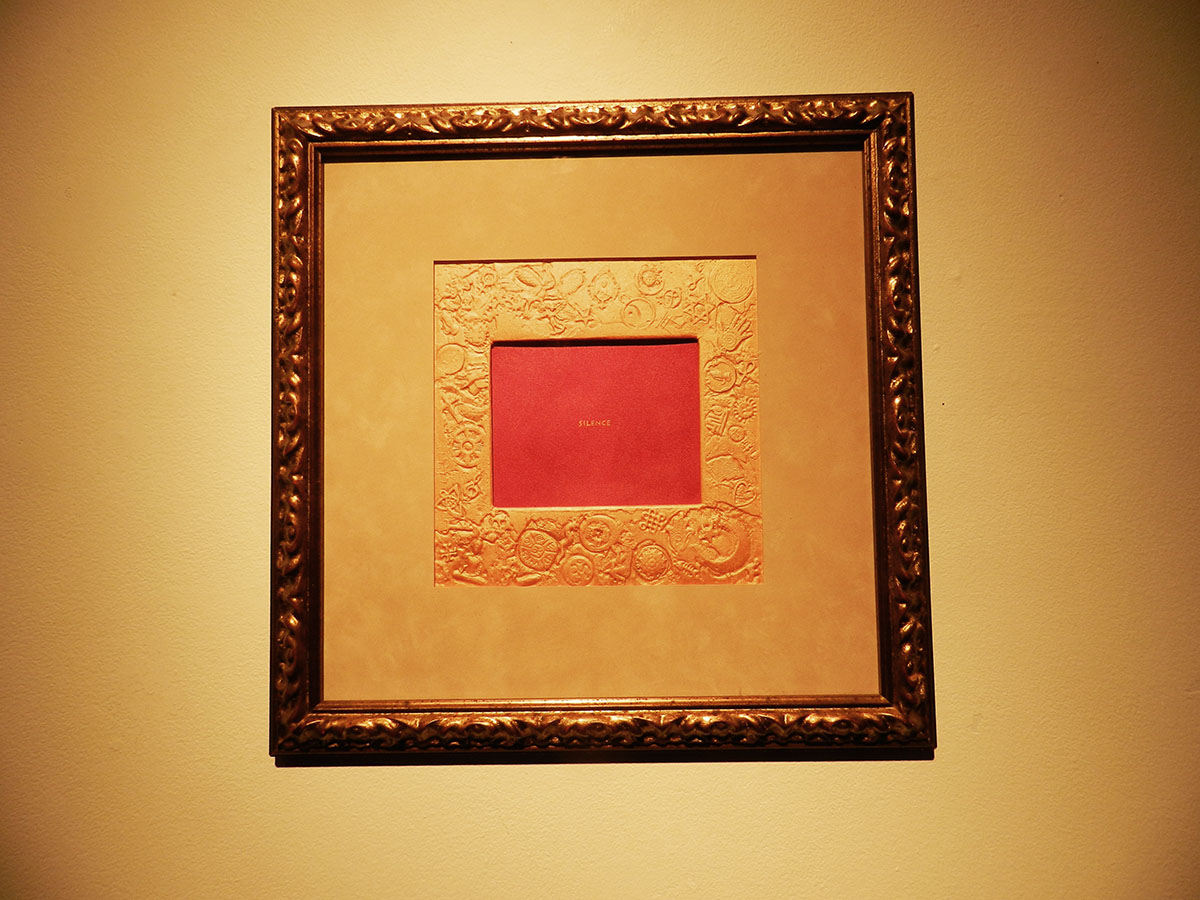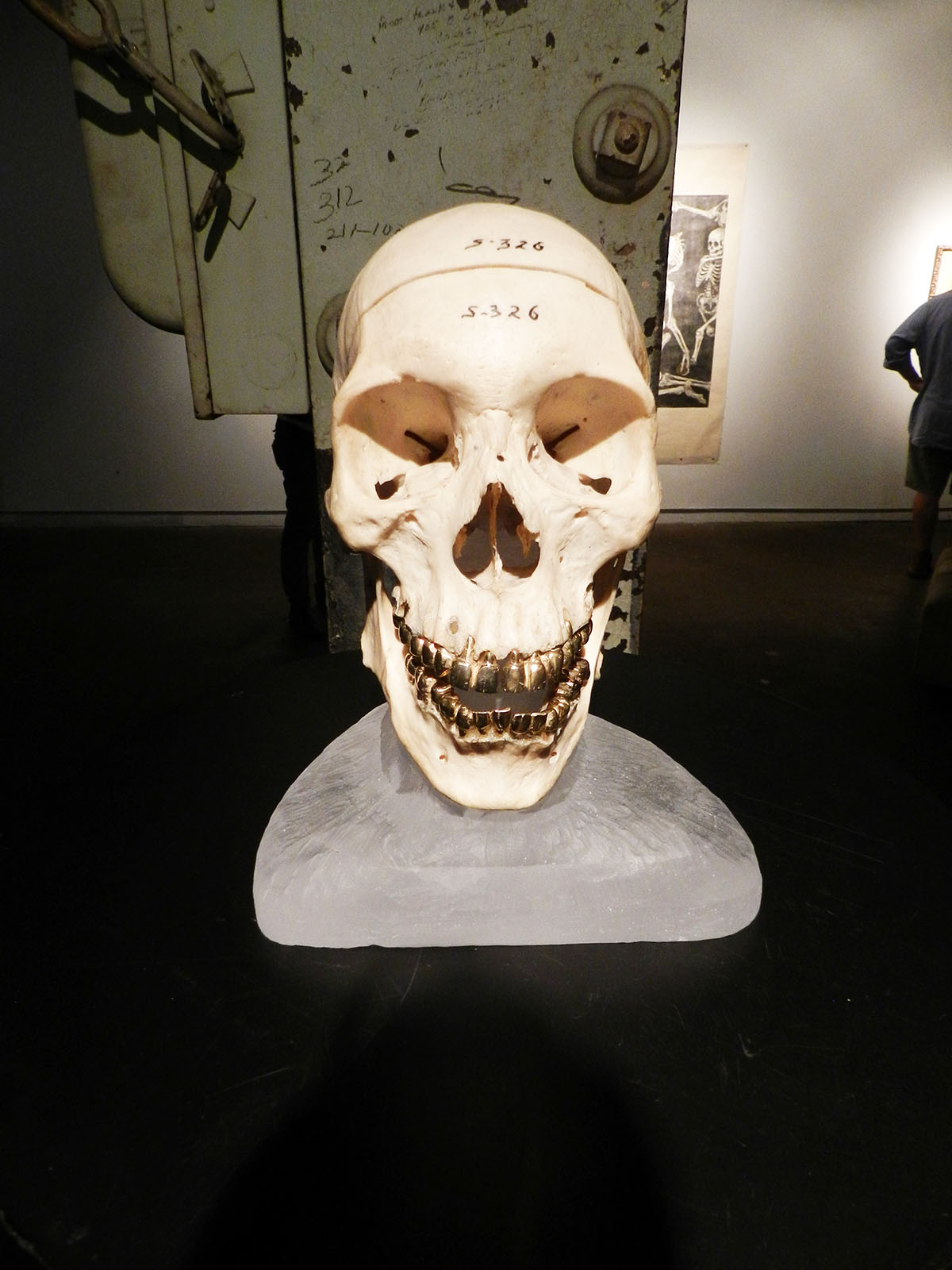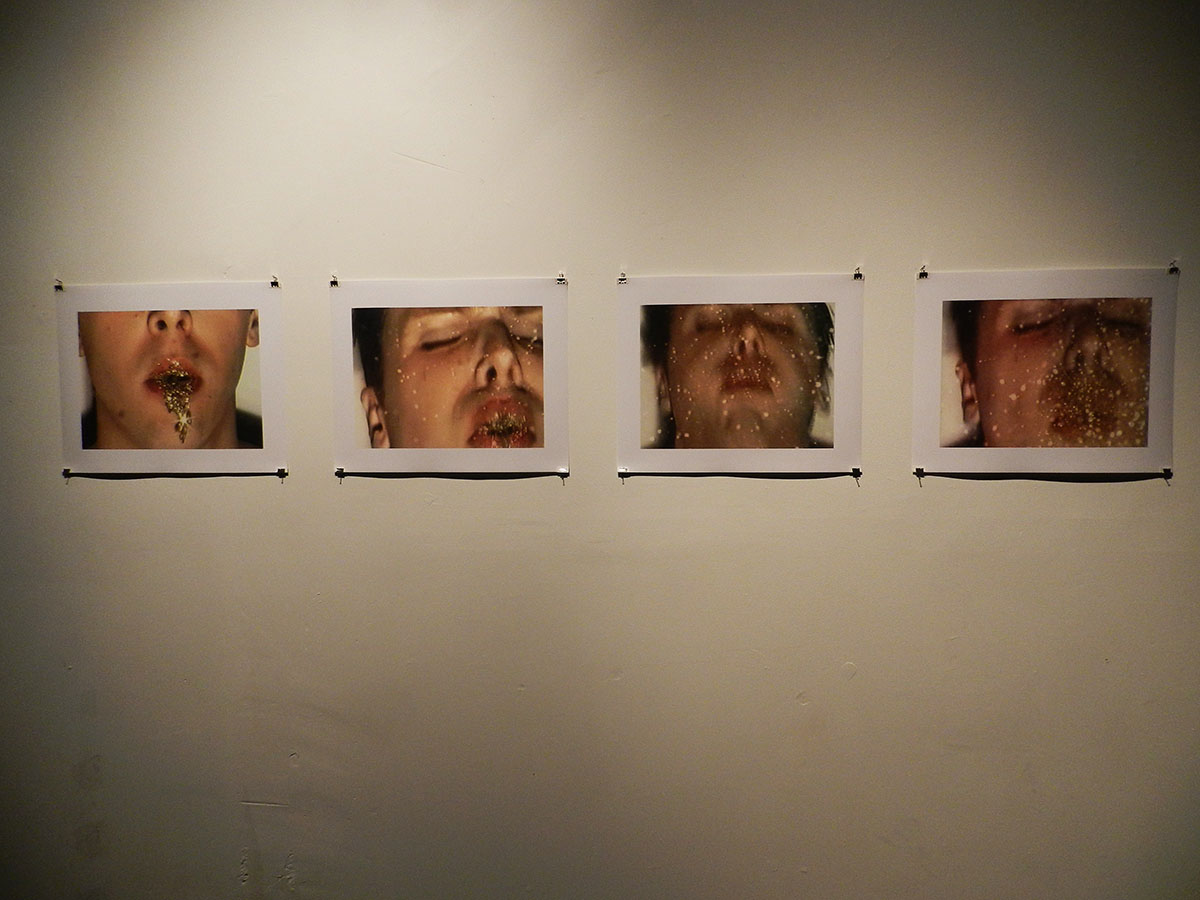Nicole Ringel Reviews Gilding the Lily at Area 405
Curated by René Treviño and Stewart Watson, Area 405’s newest exhibition, Gilding the Lily, explores different ways that artists use of superficial, shiny, and sparkly materials to mask deeper, darker elements. From human skulls with gold teeth to gold-leafed lawn chairs to metallic butterflies, the works are attractive because of their compelling surfaces, but the best pieces hauntingly allude to complexities that run deeper than their initial sparkle.
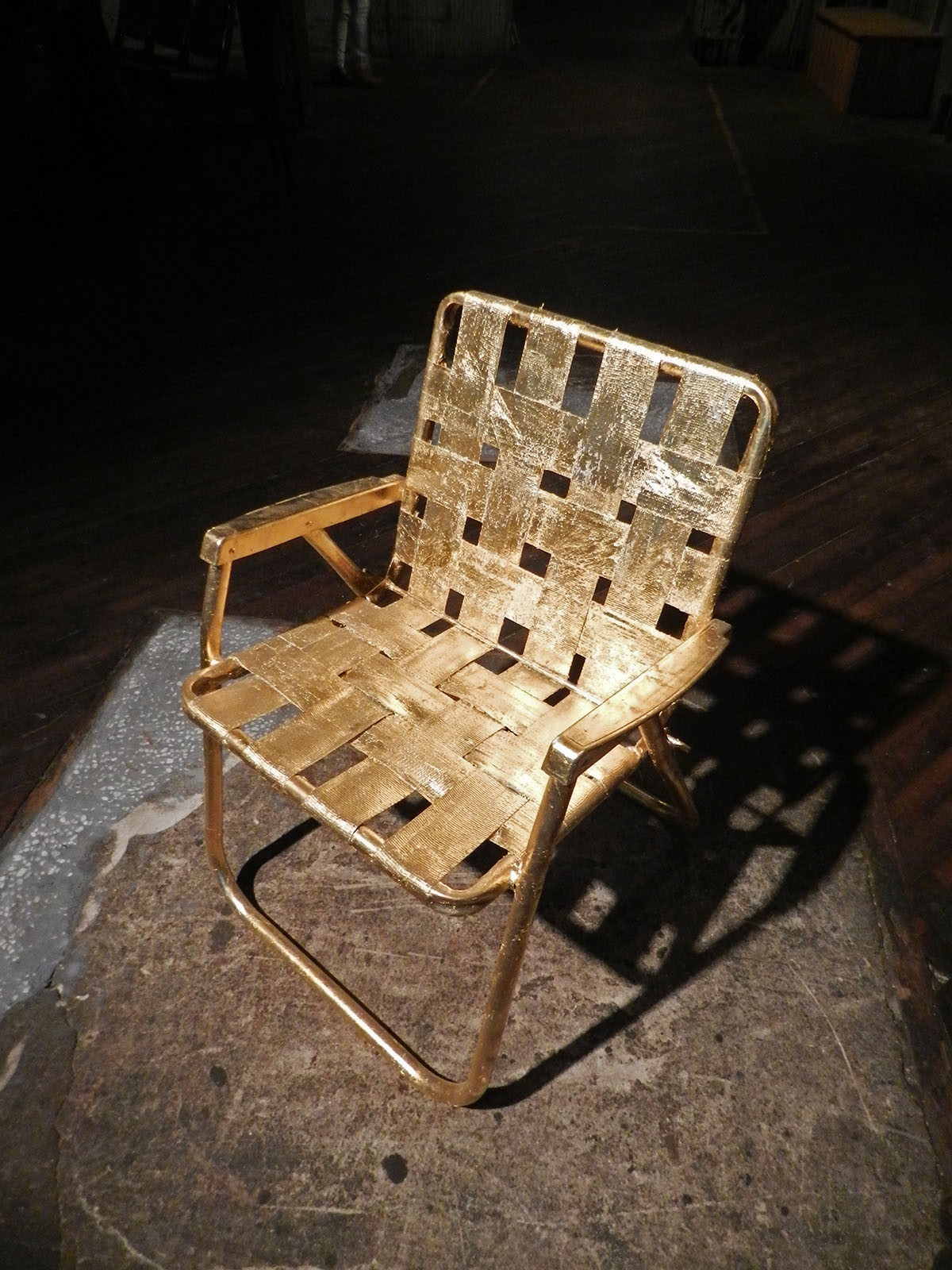
The intricately adorned objects of Marian April Glebes are among the strongest in the exhibit. Throne, an old school lawn chair covered with gold leaf, is placed directly in the path of the front entrance, confronting visitors with a paradoxical combination of beauty and banality. Glebes continues this contradiction with tiny moths and beetles hung in intimately lit shadow boxes on the adjacent wall.
Although insects tend to provoke a negative response for most people, each bug is beautified by intricate embroidery patterns in their wings, paint, or gold. The duality and contradiction between the preciousness and actuality of each object challenges both how we qualify worth and the conventional system of worth itself. If a lawn chair and insects are worthy of gold leaf, what isn’t? Viewing each object is an absurd, exuberant experience where worth has been redefined by materials and context.
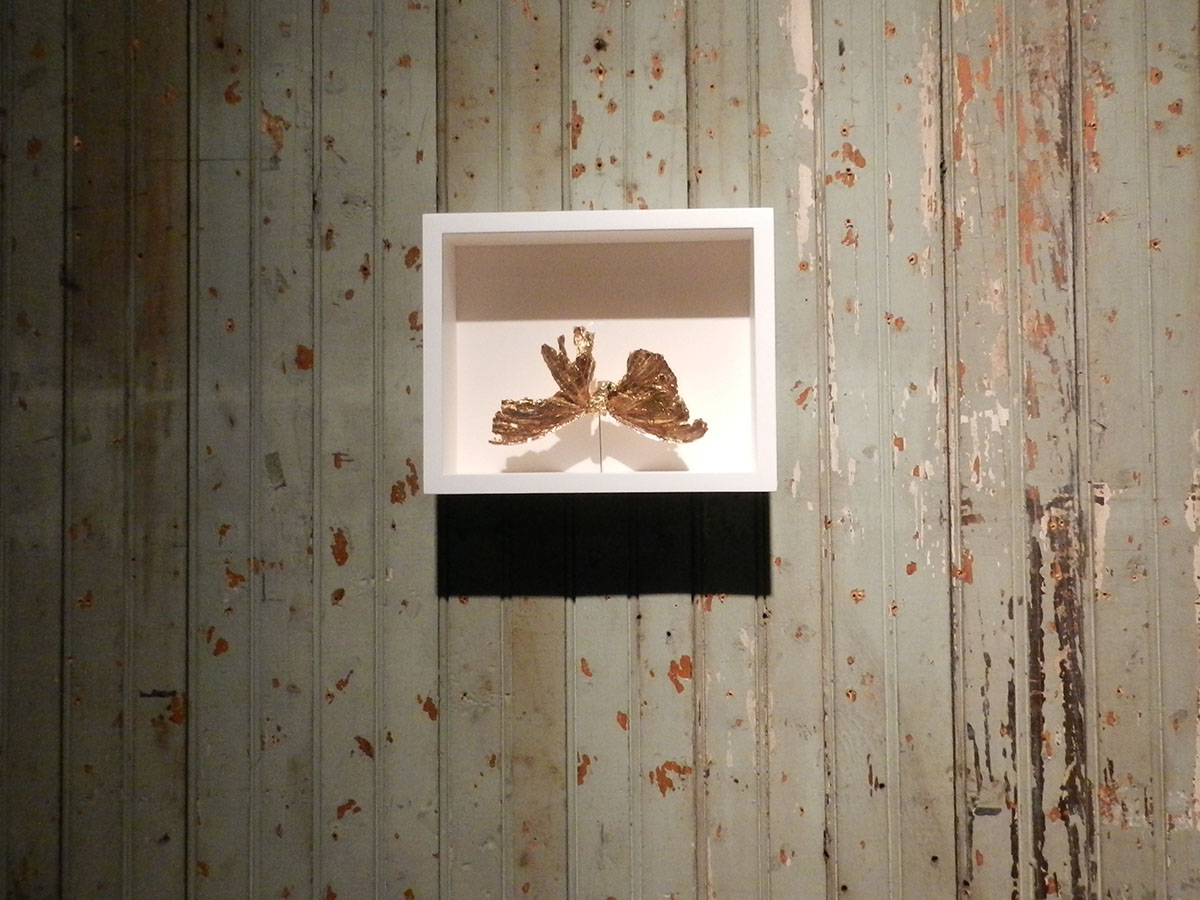

Area 405’s repurposed factory building itself is a rich context for the shiny, sparkling work in the show and the work that interacts directly with the environment is strengthened by the contrast. Jefferson Pinder’s glittery trapezoidal canvases titled Black Power and Jane Yoon’s delicate silver Mylar butterfly installation both become more beautiful and rich in the midst of textured metal plate flooring, a few pieces of forgotten industrial equipment, and dilapidated stone walls. The building’s industrial creates context, as well as content, in these works where an old and underpopulated city, heavily influenced by the economic decline of manufacturing, finds new purpose through the arts.

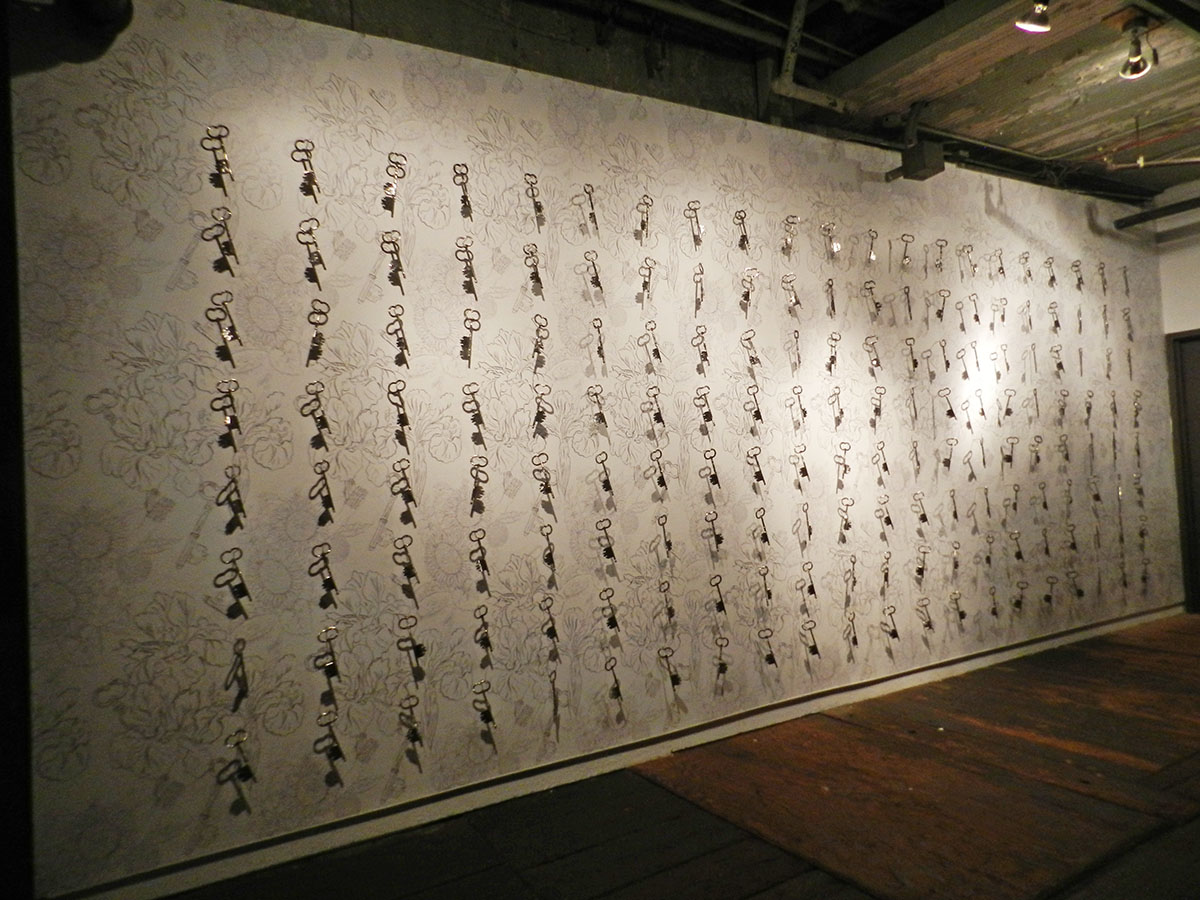
Exquisite Spectacle, a collaborative installation between mother-daughter duo Mary Annella Frank and Francesca Bozzelli, uses silver objects and floral wallpaper to explore a dark chapter of local history. Inspired by a group of dedicated suffragettes who were imprisoned for their activity in the 1910s, Frank and Bozzelli represent the womens’ stories using silver keys and metallic hand painted wallpaper.
The wallpaper, filled with sunflowers, irises, and other symbols of the suffragette movement, is a backdrop for the old fashioned, shiny keys – replicas for those used in prisons during the time of the suffragettes’ imprisonment. The elegance and immediacy of the piece attracts, but the price these empowered women paid – their freedom – signifies a struggle that continues today. What’s most interesting about Exquisite Spectacle is that the artists’ method of communicating mirrors the way culture views historical heroes; their accomplishments are viewed as beautiful and inspiring, but it is impossible to understand the weight of their experiences. As they sparkle and shine, the keys represent the opposite of the suffragettes’ experiences in prison, purposefully masking the weight of the story with a shiny, beautiful rendering.

Taking a more scientific approach to ornamentation, Jonathan Latiano’s sculpture Crux is an attention grabbing, death star-like sphere. Its silver Mylar spikes jut out at different lengths in all directions while inside, three fans circulate air and flutter the silver spikes. The vibrating pieces allude to the theoretical framework of string theory, which describes particles as having one-dimensional “strings” that vibrate in all directions.
The center of the back room of the gallery is dominated by Dan Steinhilber’s sculpture: two upside-down, stacked metal trashcans with a irregularly shaped trash bag and packing peanut sculpture placed on top. Though the central location of the work brings significant emphasis and Steinhilber’s choice of material is intriguing, it lacks the luxurious and embellished quality of its counterparts. Without shine or glitter, the sculpture falls flat in comparison to the rest of the show. Its backdrop of fringed silver Mylar, however, saves the piece with an absurd sense of glorification and contrast.
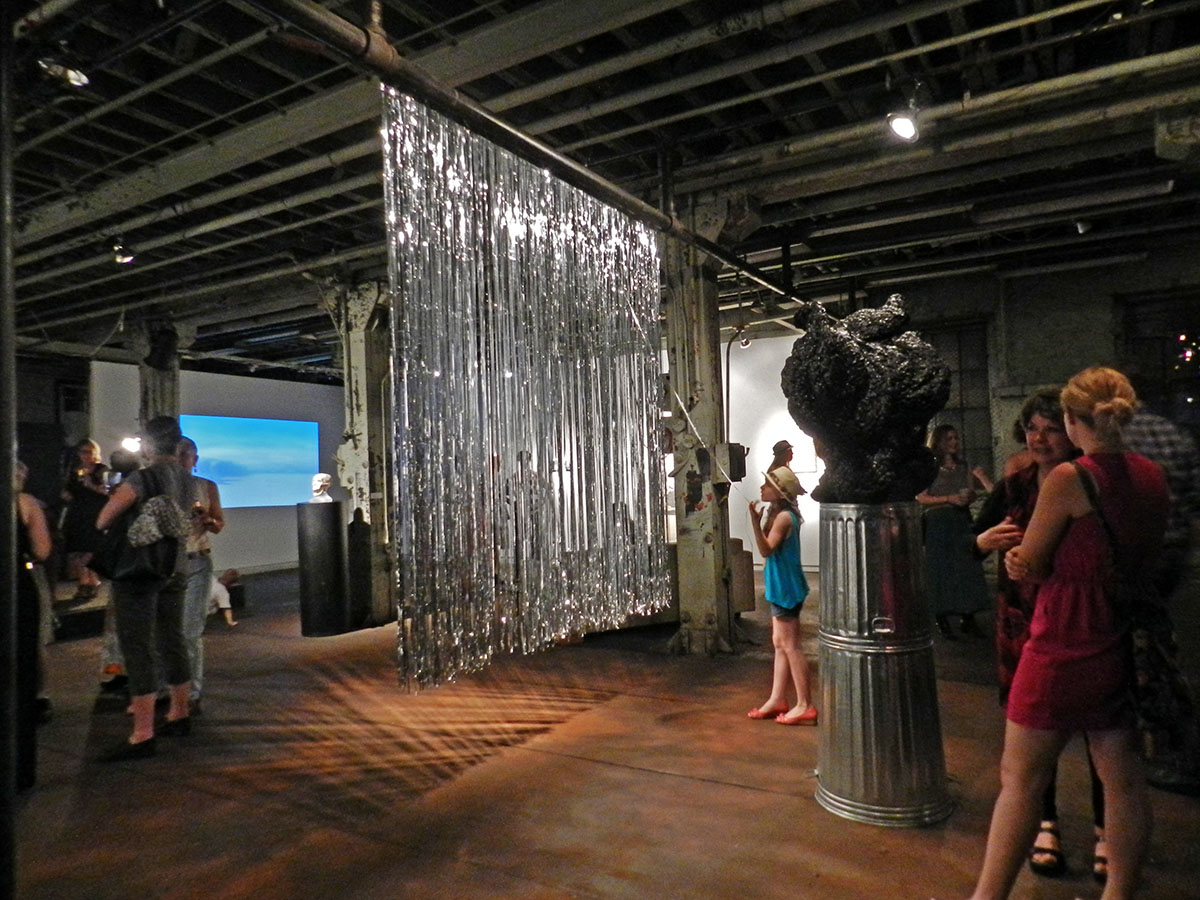
Although accomplished, Jonathan Monaghan’s animations were out of their element in this glittering exhibit. Though they included gaudy elements like golden stags, jeweled objects, and enormous closets, Monaghan’s works relied on shock value and graphic content in a way that was inconsistent with other works. The show consisted mostly of works that used an opulent facade to suggest a serious theme; in contrast, his work used the grotesque to create a more direct, graphic defacement of wealth and luxury. Though individually the surreal flow of his productions was fascinating to watch, the stark contrast to the rest of the show challenged their success in this context.
The compelling and genteel appearance of the shiny and sparkly work exhibited in Gilding the Lily confronts visitors with this paradoxical combination of seriousness and opulence, and suggests in many cases that what makes things beautiful and appealing is actually a farce. The combination of the industrial building with the embellished and shiny materials added a poignant dimension to the show. In some cases, the gold, silver, Mylar, and glitter seemed superficial and even petty, when contrasted with the historical construction of the building, but the combination of the two created a haunting duality that revealed the deceptive capability of embellishment.
Author Nicole Ringel was raised in Frederick, Maryland and is currently pursuing a BFA in Studio Art and Art History at McDaniel College in Westminster, Maryland. She is an artist and reader, and is especially interested in community and socially engaged art.
Gilding The Lily at Area 405
June 12- August 1 2015
Artscape Gallery Network Reception: July 17, 2015, 7-10pm
Artists: Chivas Clem, Mary Annella Frank & Francesca Bozzelli, Marian April Glebes, Jonathan Latiano, Trudi Y Ludwig, Jonathan Monaghan, Jefferson Pinder, Dan Steinhilber, and Jane Yoon
